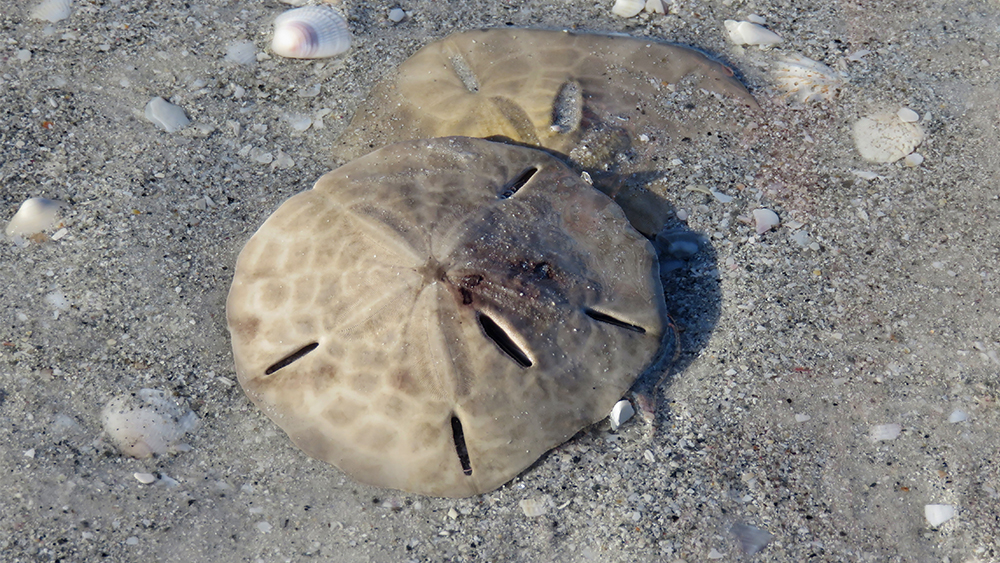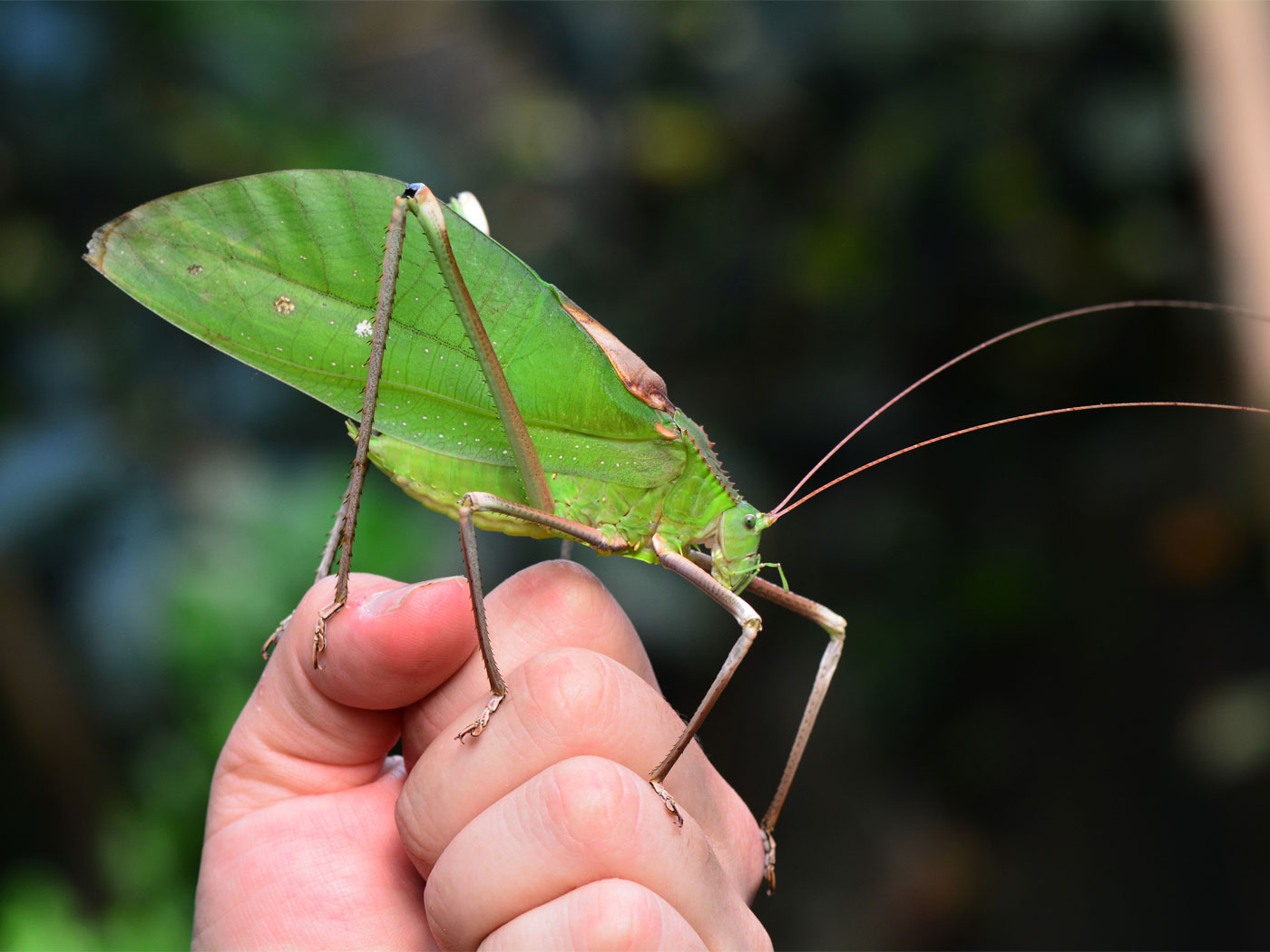Combing the sea shore for shells is a beloved activity of all ages. Sand dollars are one of the most prized treasures found at the beach. The off-white disk of the sand dollar is actually its skeleton, or test. These little ocean creatures carry a message about the world’s history and the Creator Jesus Christ’s intricate design and purpose in creation.
According to researchers, there are 150 different extant sand dollar species in the world.1 They are found in the intertidal areas of oceans, from the cold Alaskan Pacific to the warm waters of Indonesia.1,2 According to the Washington state Department of Ecology, in other countries sand dollars are also referred to as sand-cakes, sea cookies, and even biscuit-urchins. Sand dollars (genus Dendratster) are invertebrates (without a backbone), belonging to the order Clypeasteroida. The iconic star or flower shape on the sand dollar is called the petalidium. “The ‘pedals’ are made up of many small holes, used for respiration.”2 However, this shape is not as visible on live sand dollars. Live sand dollars almost look fuzzy, as they are covered in tiny hairs called cilia that help funnel food caught by its spines and pincers (pedicellariae) to its mouth.3 Design is evident in this. Everything about the sand dollar is specially designed for purposes specific to the sand dollar’s environment.
Even its digestion is intricate. According to the Monterey Bay Aquarium, there are 5 interlocking teeth at the center of the sand dollar’s mouth, creating a mechanism referred to as Aristotle’s Lantern used to “grind up tiny plants and animals.”3 If the test of a dead sand dollar is shaken, the teeth can be heard rattling inside. Breaking the test releases teeth that look like little birds. Researchers have observed sand dollars “chewing” their food for as long as 15 minutes before swallowing. They also noted the digestion process lasting up to 2 days.2
God also designed the sand dollar to serve as an integral part of the food chain by being a filter feeder. This filter feeder eats opportunistically whatever comes its way. “Sand dollar[s] feed on various prey, such as plankton, algae, remnants of living organisms, as well as organic matters and trapped microorganisms in their spines.” Their diet contributes to controlling the balance and composition of the microorganism fraction of the intertidal ocean floor.1
Sand dollars also remind us of God’s loving care for His creation—no matter the creature’s size. He provided the sand dollar with methods of self-defense specific to their habitat. After all, the intertidal zone can be a hostile environment. Sand dollars must avoid currents, the scorching sun, and predators. Sand dollars are not quick, but they can use their spines to move and bury themselves to avoid dangers. Sometimes, “in fast-moving waters, a young sand dollar ingests heavy sand grains to weigh itself down.”3 “Behold the fowls of the air: for they sow not, neither do they reap, nor gather into barns; yet your heavenly Father feedeth them.”4 This is true of sand dollars as well; our Heavenly Father takes care of them. The passage goes on to ask, “Are ye not much better than they?”4 Sand dollars, though not mighty, remind us of the Mighty One who we can trust to take care of us.
In same passage of Matthew 6, God clothes the lilies of the field.4 Scientists can explain the varying color intensity in lilies due to the pH of soil. But the colors that clothe a sand dollar come from a design so intricate that human scientists can’t easily determine its cause. Sand dollars come in various hues of purple, brown, grey, green, and black.2 Researchers in Indonesia formed a study to determine what causes different colorations, publishing their findings in 2022. They wrote, “The result of the regression analysis showed that three environmental parameters had a significant effect on the hue intensity of sand dollar, including pH, coral coverage, and rubble coverage.”1
The remains of sand dollars do not just give insight about the creature, but where their remains are found can shed light on the world’s past. The Los Angeles Times reported “shells, sand dollars, and other marine treasures” found in the Santa Monica Mountains in California, miles away from the coast.5 Montana State University posted an article about crinoid fossils, another sea creature belonging to the same order as the sand dollar and found in the limestone on Mount Everest. These fossils point to a past where the entire earth was once completely covered by water. Evolution scientists do not have an explanation other than saying that these mountains were once part of the ocean floor millions of years ago.6 Creation scientists, however, point to the global Flood recorded in Genesis 6-9. Fossils of marine creatures found both inland as well as high in the mountains, corroborates the biblical account of the Flood.
References
- Anggoro, Sutrisno, et al. Effect of Environmental Parameters on the Value of Hue Sand Dollars in Karimunjawa Islands Central Java Indonesia. Saintek Perikanan: Indonesian Journal of Fisheries Science and Technology, Published October 2022. Accessed July 3, 2023.
- “Another Day, Another (Pacific Sand) Dollar.” Department of Ecology Washington State. Posted August 25, 2021. Accessed July 3, 2023.
- "Meet the Sand Dollar." Monterey Bay Aquarium. Accessed July 3, 2023.
- Matthew 6:25-34
- Hulse, Jane. "The Hills Are Alive--With Fragments of Past." Los Angeles Times, Published February 29, 1996. Accessed July 3, 2023.
- "Summit Limestone." Montana State University. Accessed July 3, 2023.
















